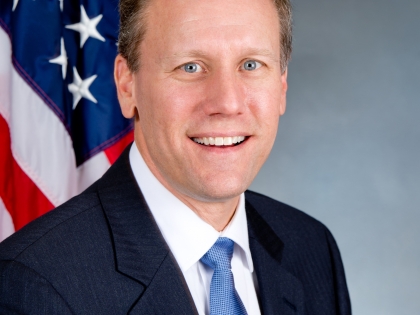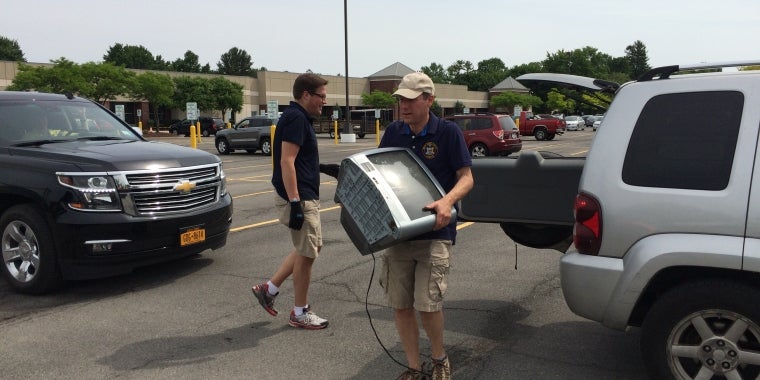
Why Gov. Andrew Cuomo Needs Upstate New York
By Teri Weaver | tweaver@syracuse.com
January 12, 2014 at 7:04 AM, updated January 12, 2014 at 7:05 AM
Albany, N.Y. - Gov. Andrew Cuomo doesn't need to win over Upstate New York to win re-election.
But his ability to establish a long-term turnaround for Upstate's struggling economy is important resume material for Cuomo's potential candidacy on the national stage.
"He thinks that his whole future is going to be linked to whether or not he can bring back a real vibrant Upstate," said Barbara Bartoletti, the legislative director of the state's League of Woman Voters. "That will be his ability to go on wherever he wants to go from New York state and say, 'Look what I was able to do, I brought Upstate back to its vibrancy that it was decades and decades ago.'"
Cuomo, a Democrat facing re-election this fall, has said repeatedly he is focused on New York and not the 2016 presidential campaign. In his annual State of the State message this week, he made it clear that his central focus is Upstate - its property taxes, its agricultural and manufacturing industries, and its tourist potential.
Whether that's enough to sway Upstate voters upset about two issues dragging down the popular governor - the NY Safe Act and hydrofracking - is unclear.
And, in the end, it may not matter. Cuomo has $28 million in his campaign chest, a 2-to-1 Democratic Party enrollment advantage and no formidable opponent. It's hard to see a scenario where guns and natural gas - even with vocal advocates hammering the governor from all sides on both issues - will derail his bid for a second term.
For the past six months, half of the state's voters have said they are ready to re-elect Cuomo, according to a review of polls by the Siena College Research Institute. Consistently, two-thirds of the state's Democrats in the same time period say they want Cuomo for another four years.
Even with the backlash from Safe Act's stricter gun-control laws, 4 out of 10 Upstate voters have said repeatedly since last summer they are willing to give Cuomo another term, according to polls.
At the same time, 75 percent of voters polled by Siena in November didn't recognize the name of Westchester County Executive Rob Astorino, the likely Republican candidate.
With that political capital behind him, Cuomo continues to look toward Upstate. He's proposing a tax credit to help Upstate manufacturers pay their property taxes, changes that would significantly lower estate taxes and the elimination of paperwork for sporting licenses.
"I think there's a lot that Republicans will like in this speech," said Onondaga County Executive Joanie Mahoney, a key GOP supporter of Cuomo.
In 2010, Mahoney endorsed Cuomo, who handily beat Republican Carl Paladino by a 2-to-1 margin statewide. In Upstate, Cuomo won by about 500,000 votes out of more than 3 million cast. All told, he lost only 13 of the state's 62 counties, and none of them in Central New York.
That victory included a 5-to-1 margin in New York City - a margin that could ensure Cuomo's re-election even if he loses Upstate.
But the governor returned again and again in his speech Wednesday to Upstate's need for more infrastructure improvements, more tax breaks and more construction cranes in the sky, like the ones now rising in Buffalo.
"Literally, over a 10-year period when the nation was growing at 9 percent, Upstate New York was growing at just about half the rate of the country," he said of the region's ailing economy. "And this is a problem, frankly my friends, that we ignored for too long and Upstate New York then entered a downward cycle."
Still, not everyone is happy with the rhetoric.
"He largely ignored some critical issues facing Upstate New York," said John Sullivan, a former state Democratic Party chairman and Oswego mayor.
"I don't think he mentioned hydrofracking at all," said Sullivan. "That was the elephant in the room. And to not address energy is to not address the real future and opportunistic considerations that could really bring back Upstate New York."
Likewise, Cuomo has lost some support Upstate since the Safe Act was signed a year ago. In November, 65 percent of Upstate voters said the governor was doing a fair or poor job, up from 47 percent a month before the Safe Act was signed.
Sen. David Valesky, D-Oneida, voted for the Safe Act, the one, and often only, complaint he hears from constituents about Cuomo's first term. At the same time, he said he hears about Cuomo's personal attention to Upstate. When a few hundred homes flooded in the Oneida area this summer, Cuomo came twice. The first trip was to assess damage. The second was to give out checks - to individual homeowners - with state money when the federal government help failed to materialize.
"He's the one that came up with that idea," Valesky said. "As far as I'm concerned, that has nothing to do with politics."
Bartoletti said she, too, believes Cuomo's efforts to help Upstate are more than just politics, that he deeply wants New York as a whole to thrive.
But Cuomo also has to come through on that promise to revive Upstate in order to move upward, Bartoletti says.
"And then if he goes onto the national level, if that's where he wants to go," she added, "he can say, 'I revitalized my Upstate. I brought jobs back Upstate. You can trust me with the nation's economy just as I worked for the economy of New York state.'"
http://www.syracuse.com/news/index.ssf/2014/01/why_gov_andrew_cuomo_needs_upstate.html


